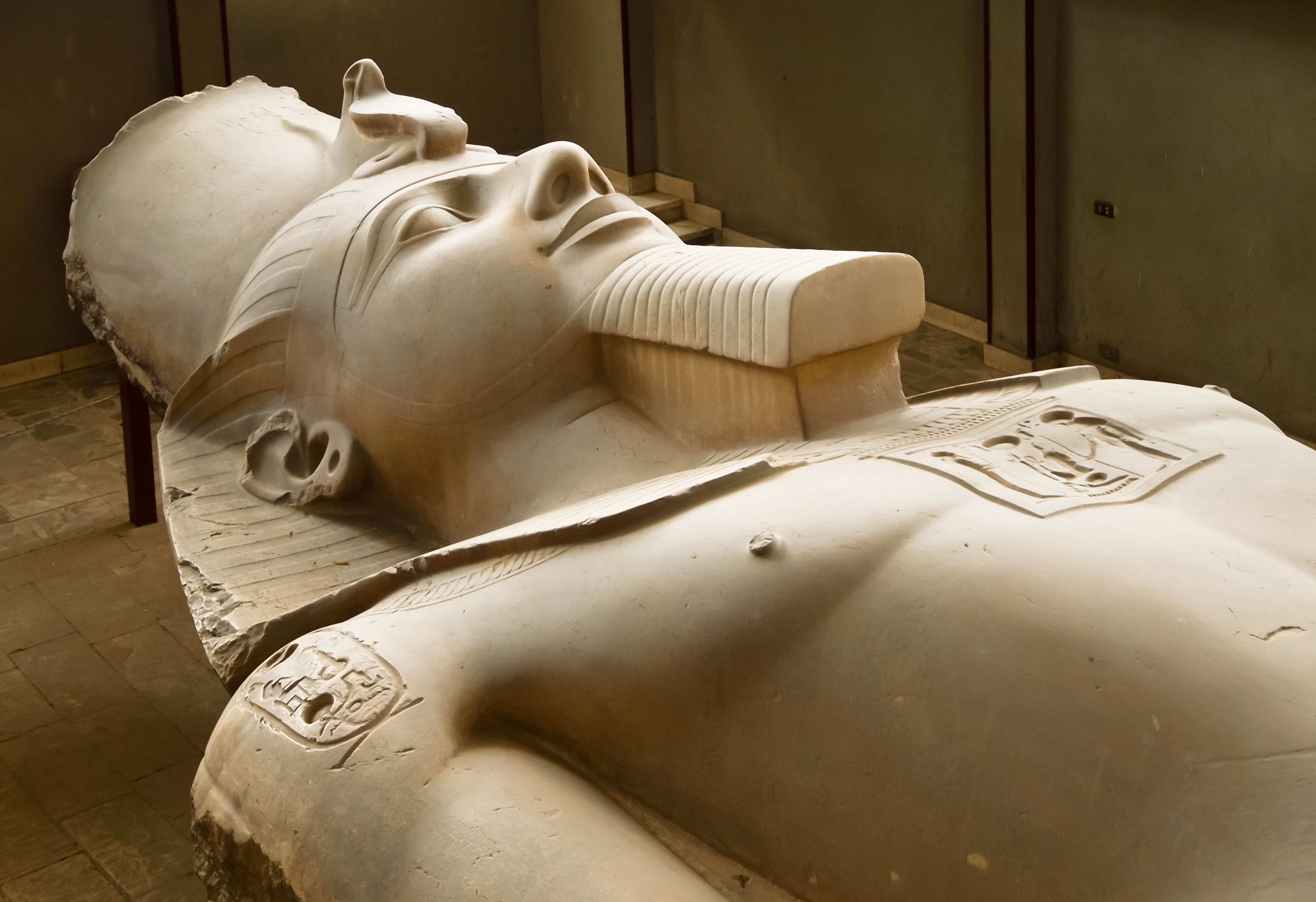Welcome to DU!
The truly grassroots left-of-center political community where regular people, not algorithms, drive the discussions and set the standards.
Join the community:
Create a free account
Support DU (and get rid of ads!):
Become a Star Member
Latest Breaking News
Editorials & Other Articles
General Discussion
The DU Lounge
All Forums
Issue Forums
Culture Forums
Alliance Forums
Region Forums
Support Forums
Help & Search
Anthropology
Related: About this forumArchaeologists Found a 3,000-Year-Old Fort in the Desert--and It Holds Evidence of a Pharaoh
The ancient structure reveals extraordinary finds of war and worship.

by Lansbricae (Luis Leclere)//Getty Images
- Tell Al-Abqain excavation site in northwest Egypt yielded a new military fort discovery that including stashed weapons, religious tributes, and military barracks.
- The mudbrick structure features two identical sections, part of it used for daily rations storage as soldiers protected the land from Sea Peoples incursions.
- The team discovered a bronze sword decoratli]ed with a carved inscription of Ramesses II.
The Egyptian military had a defense against the invading Sea Peoples during the New Kingdom Era. And it included a long bronze sword with inscriptions of Ramesses II.
The latest information comes as, in a recent statement, Egypt’s Ministry of Tourism and Antiquities announced the find of a military barracks and weapons storage complex in northwest Egypt.
The Tell Al-Abqain fort, located in the center of the Housh Issa area of the Beheria Governorate, features mudbrick architectural structures used to house everything from military personnel to the weapons and food they needed for survival. A key base during the New Kingdom Era of 1550 to 1070 BC on the Western War Road, according to Mohamed Ismail Khaled, secretary general of the Supreme Council for Archaeology, the fort was designed to provide protection for the northwest border from attacks by Libyan tribes and Sea Peoples, a collection of tribes that waged war in the Eastern Mediterranean in the Late Bronze Age.
The newly discovered fort had two nearly identically designed structures separated by a small corridor. Evidenced by large pottery remnants that included fish and animal bones, Ayman Ashmawi, head of the Egyptian Archaeological Sector of the Supreme Council of Antiquities, confirmed the use of some of the areas as storage units for food for the soldiers, including large individual granaries. The researchers also found cylindrical pot ovens that cooked their last meal centuries ago. The experts point out how the architectural design shows off how the Egyptians adapted their building designs and practices to meet the practical needs of the user while working within the landscape.
But the excavation of the fort did not just shed light on the fort’s food supplies; the discovery also delivered a history of war and hunting. The archaeological team discovered a long bronze sword decorated with the engravings of Ramesses II, one of Egypt’s more notable pharaohs from the 1200s BC, along with additional weapons, tools for hunting, and a host of personal items, whether ornamental or for hygiene, such as ivory tinsel, beads, and agate jars.
More:
https://www.popularmechanics.com/science/archaeology/a62071096/archaeologists-find-egyptian-fort-ramesses-ii/
InfoView thread info, including edit history
TrashPut this thread in your Trash Can (My DU » Trash Can)
BookmarkAdd this thread to your Bookmarks (My DU » Bookmarks)
2 replies, 661 views
ShareGet links to this post and/or share on social media
AlertAlert this post for a rule violation
PowersThere are no powers you can use on this post
EditCannot edit other people's posts
ReplyReply to this post
EditCannot edit other people's posts
Rec (8)
ReplyReply to this post
2 replies
 = new reply since forum marked as read
Highlight:
NoneDon't highlight anything
5 newestHighlight 5 most recent replies
= new reply since forum marked as read
Highlight:
NoneDon't highlight anything
5 newestHighlight 5 most recent replies
Archaeologists Found a 3,000-Year-Old Fort in the Desert--and It Holds Evidence of a Pharaoh (Original Post)
Judi Lynn
Sep 9
OP
Permanut
(6,608 posts)1. The New Kingdom era included the reign of King Tutankhamen..
Incredibly fascinating.
duncang
(3,510 posts)2. I wonder why a sword would be left.
Why would something as valuable as that was left behind? Defense priorities change and places are abandoned. But leaving a sword behind to me suggests a rushed abandonment.